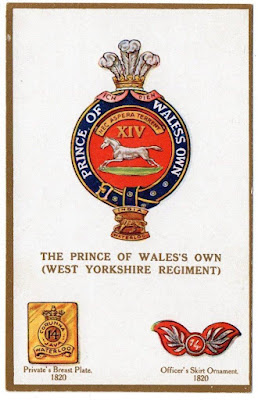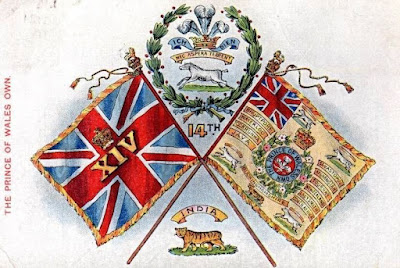This post will look at regimental
numbering in the 4th (Extra Reserve) Battalion of the Royal Munster Fusiliers
between 1908 and 1914. The Special Reserve and the Extra Reserve were the
natural heirs to the militia battalions which, for the most part, they replaced
in 1908. My 2009 article on the Creation of the Special Reserve in
1908 may be helpful here.
The Royal Munster Fusiliers had three militia
battalions (the 3rd, 4th and 5th battalions) and these survived in all but name
when the Special Reserve was introduced in 1908. Men who were then serving with
the 3rd (Militia) Battalion, were asked if they wanted to continue to serve
with the newly formed 3rd (Special Reserve) Battalion, and men who were then
serving with the 4th and 5th (Militia) Battalions, were asked if they wanted to
continue to serve with the newly formed 4th & 5th (Extra Reserve) Battalions.
Men joining the militia and special/extra reserve
were not career soldiers. The Army Book for the British Empire, published in
1893 provided a useful overview of the militia when it noted:
"Its object is to maintain in the United Kingdom a trained body of
men available "in case of imminent national danger or great
emergency" to supplement the regular army in the defence of the country.
"It offers military service to the class of men willing to give it
for a month in the year for training of for the term of their engagement on
emergency, but whose avocations do not lead them to become either regular
soldiers or volunteers."
Most 1914 Star rolls show plenty of evidence of
Special Reserve and Extra Reserve men who served alongside career soldiers.
Sometimes their numbers are prefixed by the number of their battalion -
typically a 3/ or 4/ in most line infantry regiments - but just as often there
will be no prefix.
In 1908 the regular battalions were numbering in
the 8000 range whereas the 4th Battalion, picking up the old militia numbering sequence,
was numbering in the 4000s. When these 4th Battalion men were called up as
drafts for the regular 1st and 2nd Battalions from August 1914, they retained
their original 4th Battalion regimental numbers.
Here are some sample regimental numbers and joining
dates for the 4th Royal Munster Fusiliers. Use this information to
estimate when a man would have joined this battalion.
2876 (a former
militia man) joined on the 2nd August 1908
6160 joined on the 27th
June 1910
6297 joined on the 25th
November 1911
6607 joined on the 16th
March 1912
6917 joined on the 26th
May 1913
7268 joined on the
17th July 1914
7325 joined on the
8th August 1914
7481 Joined on the
10th September 1914
7587 joined on the
15th October 1914
Do also read of
some of the articles towards the bottom of the Army Service Numbers 1881-1918 index.



.jpg)






